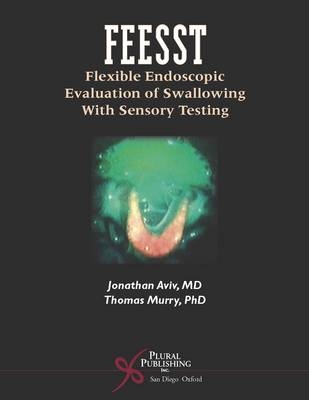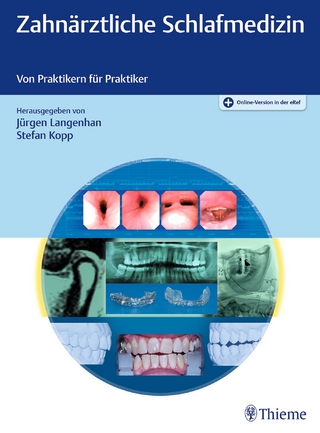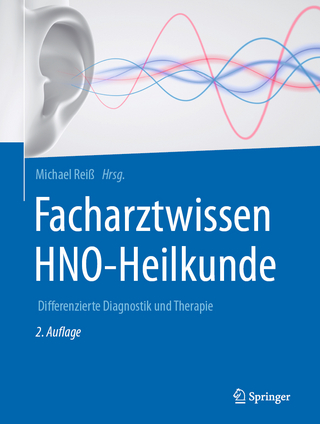
FEESST
Plural Publishing Inc (Verlag)
978-1-59756-000-9 (ISBN)
- Titel z.Zt. nicht lieferbar
- Versandkostenfrei innerhalb Deutschlands
- Auch auf Rechnung
- Verfügbarkeit in der Filiale vor Ort prüfen
- Artikel merken
Completely new book on an innovative new approach to assessment and treatment of swallowing disorders Caters for the increasing team approach in swallowing of laryngologist, gastroenterologist, pulmonologist and speech pathologist Profusely illustrated with and black and white photos Features practical coverage of the use of instrumentation as well as case examples Authors are extremely well-known and are traveling the world with courses demonstrating this new technique FEESST enables Otolaryngologists, gastroenterologists, and pulmonologists to raise the level of care for their patients with swallowing problems. This is an essential text for all physicians, clinicians and speech pathologists that treat swallowing disorders. For the first time this new examination allows direct assessment of both the motor and sensory aspects of the swallow, enabling physicians to precisely guide the dietary and behavioral management of patients to decrease the risk of aspiration pneumonia.The authors provide readers with a science behind the instrumentation, the protocols for its use, and detailed case studies demonstrating its value in evaluating and managing diverse groups including: Patients with a history of reflux; Recent stroke patients experiencing difficulty swallowing, throat clearing, or choking during meals; Patients with a difficulty related to an underlying diagnosis of Parkinson's Disease; cerebral palsy, multiple sclerosis, ALS, or dementia; Patients with a history of upper respiratory infections, unexplained fevers, aspiration pneumonia, or asthma; Patients who complain about trouble swallowing liquid, food, or medications; Patients receiving nutrition via G-tube or NGT who are candidates for improved function and ability to tolerate oral feedings; Patients with a Tracheotomy.
Jonathan Aviv, M.D. Dr. Aviv is Professor of Otolaryngology-Head and Neck Surgery and the Director of the Division of Laryngology at the College of Physicians and Surgeons, Columbia University. He is the inventor and developer of the endoscopic air-pulse laryngeal sensory testing technology known as FEESST. He is President-elect of the American Broncho-Esophageal Association, President of the New York Laryngological Society, and former Chairman of the Speech, Voice and Swallowing Committee of the American Academy of Otolaryngology/Head and Neck Surgery. Thomas Murry, Ph.D. Thomas Murry, Ph.D. is Professor of Speech Pathology in the Department of Otorhinolaryngology, Weill Cornell Medical College, Cornell University, New York, and Adjunct Professor Teacher's College, Department of Biobehavioral Sciences, Columbia University, New York.
Foreword by Philip O. Katz, M.D. Preface List of Commonly Appearing Abbreviations Chapter I. Introduction to Swallowing Why FEESST? Structure of the Voice and Swallowing Center Importance of Dysphagia Endoscopic Anatomy Swallowing Physiology Summary References Chapter II. FEESST Technique Instrumentation Examination of the Nose, Pharynx, and Larynx Method Summary References Chapter III. FEESST Applications and Outcomes Laryngeal Sensory Testing in the Elderly Laryngeal Sensory Testing in Stroke Patients with Dysphagia Using FEESST to Predict Laryngeal Penetration and Aspiration Outdomes: FEESST Versus Modified Barium Swallow (MBS) Summary References Chapter IV. Sensory Testing Alone Site of Lesion Testing Acid Reflux Disease Summary References Chapter V. Transnasal Esophagoscopy (TNE): What to Do When the Sensory Test and/or FEESST Results Cannot Explain the Etiology of the Patient's Dysphagia Introduction Development and Applications of TNE Indications for TNE Technique of TNE Algorithm for When to Use TNE, Sensory Testing, and FEESST What to Look for During TNE Summary References Chapter VI. FEESST Safety Introduction Research on FEESST Safety FEESST Safety and Dysphagia Etiologies FEESST Safety and Possible Complications Summary References Chapter VII. Coding Flexible Endoscopic Evaluation of Swallowing with Sensory Testing (FEESST), Sensory Testing, and Fiberoptic Endoscopic Evaluation of Swallowing (FEES) Transnasal Esophagoscopy (TNE) Panendoscopy (Laryngeal with Biopsy and Esophagoscopy with or Without Biopsy) Summary References Chapter VIII. Cases Case 1: Parkinson's Disease Case 2: Vascular Malformation Case 3: Neuralgia Case 4: Stroke Case 5: Laryngopharygeal Reflux (LPR) Case 6: Dysphagia Following Open-Heart Surgery Summary References Index
| Erscheint lt. Verlag | 1.6.2005 |
|---|---|
| Zusatzinfo | illustrated with colour & b/w photographs |
| Verlagsort | San Diego |
| Sprache | englisch |
| Maße | 178 x 254 mm |
| Gewicht | 594 g |
| Themenwelt | Medizin / Pharmazie ► Medizinische Fachgebiete ► HNO-Heilkunde |
| Medizin / Pharmazie ► Medizinische Fachgebiete ► Radiologie / Bildgebende Verfahren | |
| ISBN-10 | 1-59756-000-6 / 1597560006 |
| ISBN-13 | 978-1-59756-000-9 / 9781597560009 |
| Zustand | Neuware |
| Haben Sie eine Frage zum Produkt? |
aus dem Bereich


